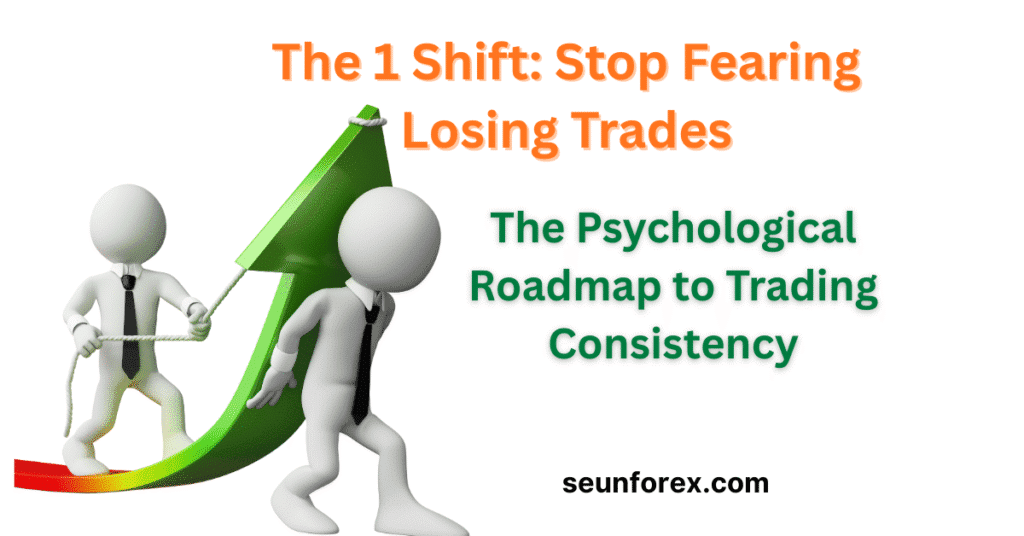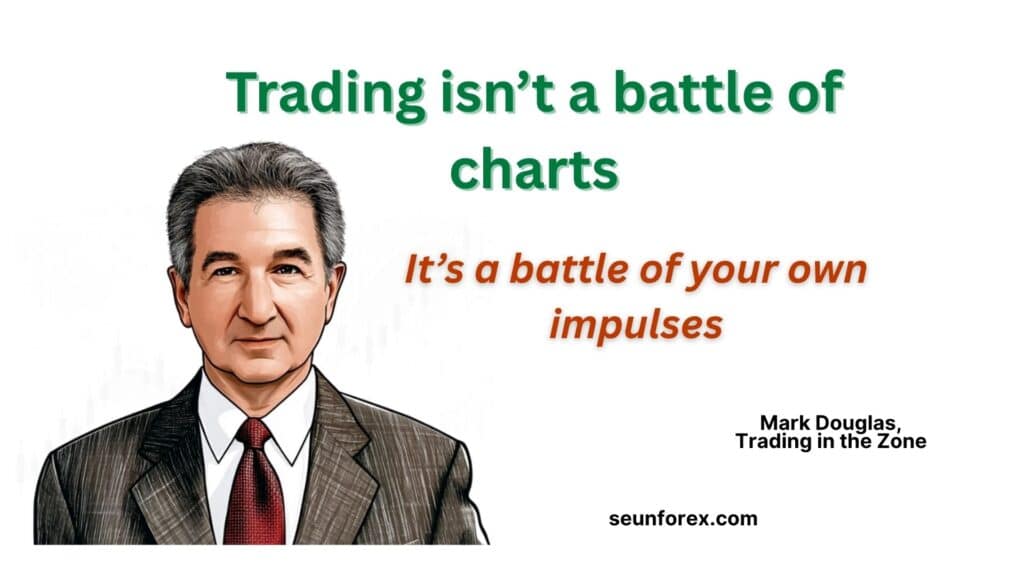
The secret to trading success is emotional discipline. If intelligence were the key, there would be a lot more rich traders.” — Victor Sperandeo
Trading: Glamour, Myths, and the Hidden Truth ✨💸
Trading is seductive. It’s the financial world’s equivalent of fast cars, luxury watches, and red carpets. Instagram reels flash “six-figure days,” charts dance like slot machines, and tweets from strangers boast about turning $500 into a condo in Miami. The world makes trading look like instant wealth.
But here’s the harsh reality: more than 90% of new traders fail within their first year. Many step onto the trading battlefield unarmed—no rules, no plan, just a dream of easy money. I was one of them. Maybe you are too.
Trading without preparation isn’t just risky—it’s emotionally, mentally, and financially dangerous. It drains your confidence, your relationships, your sleep, and sometimes even your health.
This article isn’t about the glamorized version of trading. It’s about losing trades, the lessons they carry, and why embracing them is the true path to consistent success. If you’re just starting—or even if you’ve been at it a while—read this as a roadmap of what not to do, and how losses can become your most valuable teacher.
🎭 Mistake #1: Mixing Trading and Investing Like It’s a Smoothie
Early in my trading journey, I thought I was being “diversified.” I bought blue-chip stocks for the long term, and simultaneously day-traded random tickers I barely researched.
The result? Chaos.
Most days, one strategy bled while the other barely broke even. Instead of a focused portfolio, I had a dysfunctional family of assets fighting for attention. I was constantly distracted, constantly anxious, and rarely profitable.
Lesson: Trading and investing are completely different sports. You wouldn’t wear football pads to a tennis match. Treat them separately, develop distinct strategies, and respect the unique discipline each requires.
❤️❌ Mistake #2: Falling in Love (or Hate) with Stocks
Your first portfolio probably looked like mine: $AAPL, $TSLA, $MSFT, $AMZN. Why? Because everyone loves market darlings.
But here’s the problem: I wasn’t analyzing anything. I bought when hype hit and sold when fear kicked in. My strategy was pure emotional FOMO.
Lesson: Stocks are not soulmates. Analyze them, trade them strategically, and cut them loose if they turn toxic. Emotional attachment leads to inconsistent trades and unnecessary losses. To understand more about how emotions affect trading decisions, check out this comprehensive guide on Trading Psychology by Investopedia.
⚠️ Mistake #3: Using Margin Like a Genius (Spoiler: I Wasn’t)
Leverage felt like I had unlocked a cheat code. “If I can double my position, I can double my gains!”
Reality check: If you can’t win with $1,000, you definitely won’t win with $10,000 borrowed. Margin is like nitroglycerin: explosive in the hands of beginners.
Lesson: Master risk with small capital before adding jet fuel. Leverage magnifies everything—especially mistakes.
💬 Mistake #4: Trading on Chat Room Tips
“Buy $XYZ now! It’s going to moon!”
I used to follow these tips like gospel. But when the trade turned against me, I had zero conviction to hold. I didn’t know the setup, I didn’t believe in the strategy, and I definitely wasn’t managing risk.
Lesson: Never outsource your thinking. Watch and learn, but trade only what you understand. Build your own edge.
🎲 Mistake #5: Ignoring Position Size and Probabilities

I used to treat every trade like a lottery ticket. Big size on random setups. Small size on good ones. Zero consistency.
Only later did I understand that you don’t win by being right once—you win by being right enough over time, with controlled risk.
Core Formula:
🧠 Edge + Probability + Position Size = Trading Success
Lesson: Position sizing isn’t sexy, but it’s your lifeline.
📓 Mistake #6: Not Keeping a Journal
I didn’t journal my trades at first. I didn’t want to see the wreckage in writing.
But once I did? Patterns emerged. The same stupid mistakes — over and over. And just like that, I started improving. Slowly, painfully, but measurably.
Lesson: A journal is your trading mirror. You can’t fix what you won’t face.
🏁 The Bridge: Why Losing Trades Aren’t Failure
Here’s the paradox: losing trades are not signs of failure. They are the raw material from which consistent traders build skill and resilience.
The traders who thrive are not the ones who never lose—they are the ones who systematically learn from losses, control risk, and stick to their plan.
🧠 Turning Losing Trades Into Your Advantage
If you think losing trades are failure, think again. The truth is: they’re the raw material for consistent traders. Every loss is a lesson if you approach it correctly.
Here’s how to turn losing trades into actionable insight:
Analyze, don’t panic 📊
Don’t react emotionally. Step back and review why the trade lost. Was it poor timing? Overleveraging? Ignoring technical signals? A losing trade is like a mini post-mortem—it tells you exactly where your strategy failed. For example, I once lost $3,000 in a single morning because I ignored a trend reversal signal. By analyzing that loss, I learned to watch confirmation candles carefully—something that now saves me thousands in potential losses. For more on managing risk and surviving tough trading periods, check out this guide on risk control and $500 account survival secrets.
Record everything ✍️
Your journal should capture entry price, exit price, rationale, mistakes, and emotions. Over time, patterns emerge, allowing you to adjust your strategy. Writing down your emotional state during losses is just as important as noting the technical factors. I used to ignore my frustration and anger—but once I documented it, I realized that losing streaks trigger emotional errors, which I could now anticipate and avoid.
Detach emotionally 🧘
Accept that losses are part of the game. Emotional trading is far more dangerous than any single losing trade. Detachment doesn’t mean indifference—it means understanding that losses are data, not judgment.
Adjust and improve 🔧
Use your analysis to refine position sizing, stop losses, and trade selection. Losing trades are feedback loops, not verdicts. Every losing streak is an opportunity to improve your process, not a reason to quit.
📓 Mistake #7: Ignoring Post-Trade Analysis
Many traders celebrate wins but ignore losses. This is a huge mistake. Skipping post-trade analysis means repeating the same errors indefinitely.
Lesson: Treat every trade like a teacher. Write down:
- Why you entered
- Why you exited
- What went wrong
- What went right
This transforms random losses into structured lessons that compound over time.
Pro Example: A friend of mine consistently lost on morning breakouts. After analyzing 50 trades, he discovered that volatility spikes caused early stop-outs. Adjusting his entry window reduced losses by 70% in one month.
💡 Emotional Discipline: The Real Edge

Consistency is more psychological than technical. Even with perfect charts and setups, without discipline you will fail.
Key emotional discipline techniques:
- Stop-loss obedience 🚫💰: Always respect your predefined stop loss. Some traders think adjusting it mid-trade “saves” them—but it usually increases risk.
- Trade only your plan 📝: Avoid impulsive trades. I once entered a stock because of a tweet. Result: -$1,200. Lesson learned: no tips, only plans.
- Mindfulness and reflection 🧘♂️: Take breaks and detach when losing streaks occur. Step away, meditate, or review charts without trading.
- Accept small losses ⚖️: It’s better to lose small and stay in the game than chase huge wins and risk everything.
📊 Lessons From Professional Traders
Paul Tudor Jones
- Emphasizes macro risk management.
- Famous quote: “At the end of the day, the most important quality for a trader is survival.”
- Focuses on cutting losses quickly and letting profits run.
- Example: He avoids holding positions that exceed 2% of his account risk. Beginners often ignore this principle, leading to catastrophic drawdowns.
Ed Seykota
- Pioneered trend-following.
- Advocates using mechanical rules to remove emotion.
- Quotes: “The trend is your friend until the end when it bends.”
- Tip: Seykota’s rules show that losing trades are expected; the discipline is in staying in trends long enough to make gains exceed losses.
Mark Minervini
- Known for U.S. Investing Championship performance (334.8% return).
- Focuses on precision entry, strict risk management, and trading only high-probability setups.
- Insight: Minervini treats losing trades as “data points” for perfecting entries, not as failure.
Lesson: All top traders share one principle: losses are inevitable; discipline and strategy turn them into consistency.
🏁 The Mechanics of Learning From Losses
1. Understand Probabilities
No trader wins 100% of the time. Accepting this reduces emotional stress. Use probability-based frameworks for entries and exits, not wishful thinking.
2. Track Risk-Adjusted Performance
It’s not just about profit and loss. Use metrics like Sharpe ratio or expectancy. This helps you see which trades are truly profitable over time.
3. Review Trades Weekly
Set aside a fixed time each week to review all trades. Weekly review highlights patterns faster than monthly or yearly reviews.
4. Build Checklists
Use simple checklists before every trade:
- Does this meet my strategy rules? ✅
- Is risk acceptable? ⚖️
- Am I emotionally clear? 🧘
Checklists eliminate impulse decisions and reduce emotional losses.
🏎️ Final Thoughts: Embrace Losses, Achieve Consistency
Trading isn’t about never losing—it’s about losing the right way. Here’s the golden principle:
“Push the speed pedal when you’re right. Slam the brakes the second you’re wrong.”
Consistency comes from:
- Controlled position sizing
- Following your strategy
- Journaling every trade
- Emotional detachment
- Learning from every mistake
✅ Ultimate Takeaway Checklist
⛔ Don’t mix investing and trading in the same account
❤️ Avoid emotional bias toward popular stocks
⚖️ No margin until you’re consistently profitable
🤐 Never trade based on tips you don’t understand
📏 Master risk, probabilities, and position size
📘 Keep a trade journal and review it weekly
🧘 Practice emotional discipline and reflection
📊 Review trades weekly and use metrics like Sharpe ratio
✍️ Your Turn: What’s Your Worst Trading Mistake?
Drop it in the comments or journal it privately. Facing mistakes is the fastest path to consistent trading success.